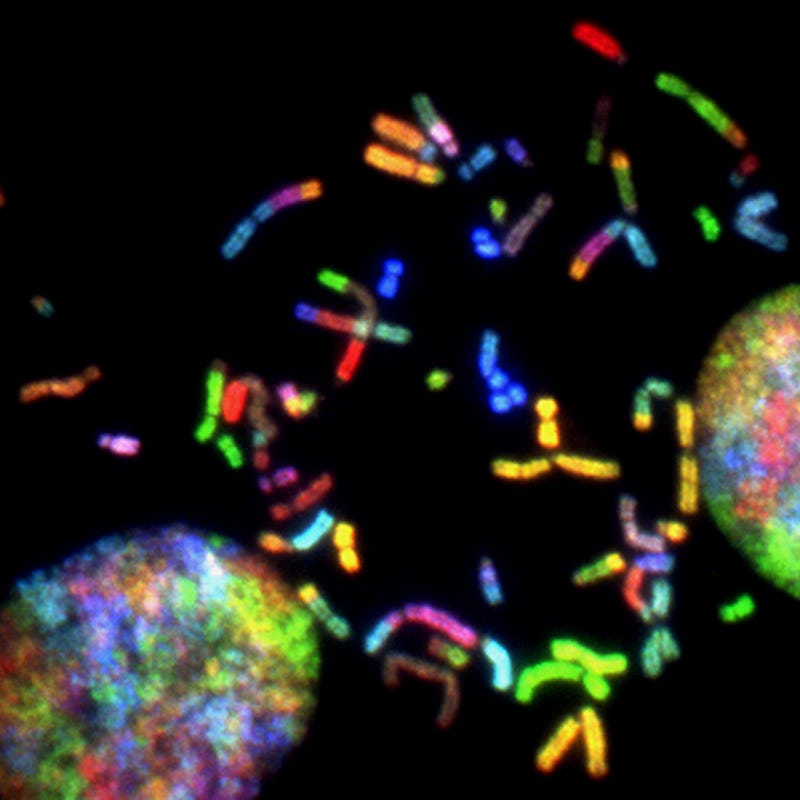Exploring Quantum Physics' Impact on DNA Mutations
Written on
Chapter 1: The Intersection of Quantum Physics and Biology
The dawn of quantum physics in the early 20th century ignited significant excitement among scientists. Central to quantum mechanics is the principle of quantum superposition, an intriguing phenomenon where particles can occupy multiple locations simultaneously. This concept has continuously challenged our understanding of physics and transformed scientific inquiry across various fields. As technology enhances our grasp of quantum phenomena, different scientific areas are beginning to investigate their complexities.
Among these fields are genetics and molecular biology, which have long grappled with the enigma of DNA mutations leading to malignant transformations. Here, Quantum Biology emerges as a promising frontier, aiming to decode the mysteries surrounding DNA mutations.
Quantum Biology: A New Perspective on DNA Mutations
Quantum Biology is an emerging discipline that explores the potential influence of quantum mechanics at the cellular level. This multifaceted field unites experts from nuclear physics, molecular biology, and biochemistry. While still in its infancy, the roots of Quantum Biology trace back to the 1930s, with early advocates like Niels Bohr suggesting that quantum mechanics could unlock some of biology's most challenging mysteries.
This field effectively links quantum physics principles to biological systems. Although the peculiar laws governing the subatomic realm may seem counterintuitive, numerous experiments support their validity.
Nonetheless, a significant hurdle remains: many biologists and physicists concur that quantum effects predominantly operate on minuscule scales, often unable to influence larger molecules. However, increasing evidence indicates that nature might employ quantum laws to optimize biological functions, as evidenced by studies on photosynthesis revealing the role of quantum coherence in enhancing efficiency.
Consequently, researchers are now investigating whether quantum mechanics subtly influences various biological processes, especially the intricate dynamics within cellular nuclei.
How Does Quantum Biology Account for DNA Mutations?
DNA consists of nucleotides formed from phosphoric acid, pentose sugar, and four base pairs. Mutations arise from alterations in these base pairs. The double helix structure of DNA relies on hydrogen bonds to maintain its integrity, with each bond consisting of a hydrogen atom linking two molecules.
On a subatomic scale, all atoms are believed to adhere to quantum mechanics. Remarkably, a single atom can determine whether a gene undergoes mutation, and these atoms are particularly susceptible to quantum effects that may lead to abnormalities.
Theoretical physicist Prof. Jim Al Khalili and molecular biologist Johnjoe McFadden from the University of Sussex have proposed a quantum theory explaining how mutations may occur. Their hypothesis suggests that randomness in subatomic spaces, attributed to quantum mechanics, contributes to mutation processes.
A recent study published in Physical Chemistry Chemical Physics attributes this phenomenon to quantum tunneling.
The Role of Quantum Tunneling in DNA Mutations
Proton tunneling involves a proton disappearing from one location and reappearing in a nearby one. In the microscopic world, particles can traverse barriers they theoretically lack the energy to overcome. Imagine being able to walk through a wall and appear on the other side.
Researchers at the Surrey Leverhulme Quantum Biology Centre set out to investigate the role of quantum tunneling in DNA mutations through advanced computer simulations. Their findings indicated that hydrogen atoms, which provide structural support to the DNA double helix, can behave like dispersed waves under certain conditions. This behavior allows hydrogen atoms to exist in multiple locations simultaneously, a consequence of proton tunneling.
As a result, hydrogen atoms can occasionally be found in incorrect DNA strands, leading to mutations. While these mutations are transient, they can survive the DNA replication processes within cells, potentially posing health risks.
Understanding how quantum effects manifest at room temperature remains unresolved. Quantum systems must be shielded from classical physics influences, and variations in temperature can induce quantum decoherence. The prevailing theory suggests that nature may protect these delicate quantum effects in biological systems, a concept scientists are still exploring in the context of technologies like quantum computers.
Nonetheless, this research provides a compelling lens through which to examine biological phenomena. The potential ramifications of quantum mechanics' explanations are vast.
For the first time, a significant research grant has been awarded to Oxford University physicists to lead a groundbreaking study in quantum biology. This funding marks a significant endorsement for a discipline often dismissed as impractical.
The Endless Possibilities of Quantum Physics
Looking ahead, this new frontier offers a departure from conventional scientific paradigms. The counterintuitive nature of quantum mechanics is undeniably fascinating, and its influence on everyday phenomena cannot be overlooked. If the emerging insights prove accurate, the implications could be profound.
Future studies aim to explore how tautomers produced via quantum tunneling may propagate and induce genetic mutations. The journey is just beginning. With quantum physics, the potential for discovery is limitless. Perhaps one day, we will extend our understanding beyond biochemical processes to unravel abstract concepts such as human consciousness through the lens of quantum physics.
This video discusses the intriguing evidence suggesting that unusual chemistry and DNA mutations may arise from quantum effects.
In this video, the necessity of quantum mechanics in biology is examined, shedding light on its foundational role in various biological processes.
